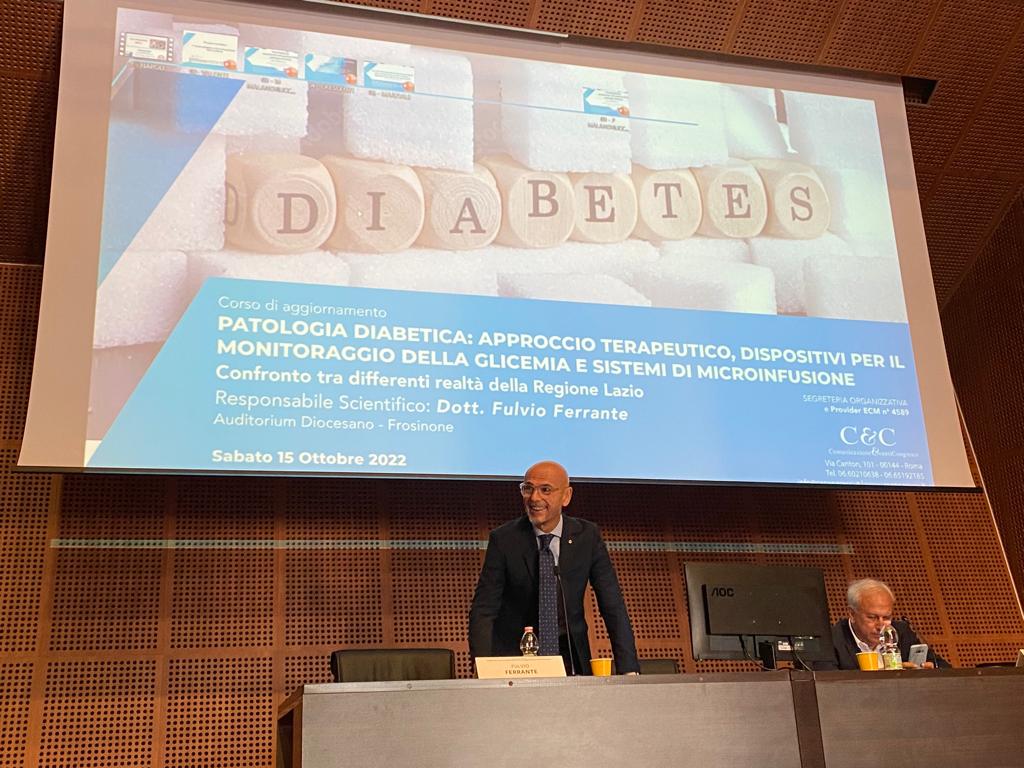Stimulate a reflection among the insiders of the province and the Lazio Region on the evolution of diabetic pathology.
This was the theme that was at the center of the refresher course organized by the Asl of Frosinone, a comparison between the different realities of the Lazio Region, conceived by the Director of the Department of Diagnostics and Pharmaceutical Assistance and the UOC Pharmacy Dr. Fulvio Ferrante with the collaboration of the Head of the UOSD of Endocrinology and Metabolic Diseases Dr. Fabio Celletti, which was held at the Diocesan Auditorium of San Paolo in Frosinone.
The meeting that also saw the participation of the Mayor of the capital city Riccardo Mastrangeli boasted the authoritative introductory report by Prof. Nicola Napoli connected from India and the focus on telemedicine by Dr. Sergio Pillon, followed by those of Dr. Ilaria Malandrucco, Livio Valente, Sabrina Crescenzi, Maria Lorena Marziale and Alessandra Iadecola.
The course, which registered great interest, with all the available seats occupied, helped to stimulate reflection among the insiders of the province and the Lazio Region, on the evolution of the clinical and regulatory framework, on the new guidelines, on AIFA and regional resolutions.
Interest was also focused on projects that can ensure greater adherence to the therapy, in the absence of which, the obvious outcome is that of the failure of the therapy itself.
The meeting also had the objective of creating a synergy and unity of intent between specialist doctors, GPs, pharmacists of the ASL and community pharmacists in order to guarantee a correct continuity of hospital-territory care.
THE SITUATION IN THE PROVINCE OF FROSINONE
The province of Frosinone, out of a population of 500000 inhabitants, has 28,450 people with type 2 diabetes (the most common form) and 3,314 with type 1 diabetes (the most severe form). The Lazio Region hosts 311,630 people with type 2 diabetes and 36,366 people with type 1 diabetes.
It is a progressive disease that sees, over the years, the development of complications responsible for the high mortality of the person with diabetes. These result in an increased risk of myocardial infarction, STROKE, kidney failure, blindness, and lower limb ulcers. Reasons for which, great effort must be made to promote the prevention, timely diagnosis and correct treatment of diabetes; weapons, these, which have proved successful in combating the disease.
In Italy, the prevalence of diagnosed diabetes is close to 6% with over 3.5 million people living with this disease in our country. The prevalence increases with increasing age to reach 21% in people aged 75 years and older.
To these numbers must be added an estimated share of about 1.5 million people who, despite having the disease, are still unaware of it. In modern society, where scientific progress is aimed at reducing the incidence of diseases and promoting the concept of health, unfortunately, there is an opposite trend for diabetes, since the prevalence of this disease is increasing.







